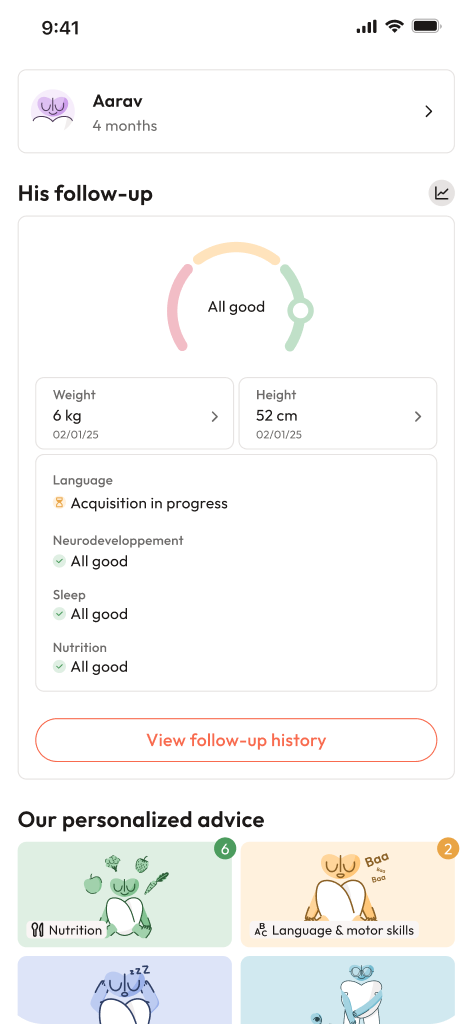The third trimester of pregnancy, stretching from week 28 right up to the moment your baby arrives, is a whirlwind phase filled with anticipation, complex questions, and undeniable physical changes. Time seems to quicken—every week brings a new sensation, a fresh question, sometimes a wave of anxiety or wonder. Can the baby move like this? Is this normal swelling? Should that little flutter be happening now or later? These moments define the experience for many parents—sometimes comforting, sometimes perplexing. Rest assured, many have walked this path, and while every pregnancy is unique, medical science offers valuable answers and ways to ease your journey. You’ll learn about what unfolds week by week, what signals matter, how to fine-tune day-to-day routines, and how to step into birth ready for whatever comes next.
Key fetal milestones in the third trimester of pregnancy
Weeks 28–32: Early third trimester
Neural pathways burgeon rapidly now—the brain is in overdrive, concocting connections that will one day underpin everything from your baby’s first cry to the reflexive grasp of your finger. Sleep-wake cycles begin to take shape: sometimes, just as you wish to rest, your little one throws a midnight party with energetic kicks. Fetal development in this window focuses on fine-tuning the brain and lungs, while fat accumulates beneath the skin, making your baby not just bigger, but also more resilient for life outside. Average size by week 28 hovers around 1 kg, with steady gains every week.
Parents, here’s what you might notice: bursts of movement, longer nights, and growing curiosity—does that kick mean all is well? Medical teams track fetal position, growth, and your health markers—iron status, blood pressure, those all-important fetal heart tones.
Weeks 33–36: The middle stretch
Suddenly, the baby’s growth intensifies. Surfactant—nature’s lubricant for baby lungs—increases production, prepping your child to breathe air. The brain keeps refining, with heightened motor and sensory refinement. Most babies now wriggle their way to a head-down position, an optimal orientation for birth. Breech? No need to panic: sometimes your provider will discuss an External Cephalic Version, a safe attempt at encouraging a head-down turn, usually performed around week 36 or 37.
Space gets tight, so those robust kicks might morph into rolling or nudging sensations. Your care team may start discussing Group B Strep (GBS) testing and prepping lists for practical tasks like car seat installation—a detail easy to overlook in the pregnancy scramble.
Weeks 37–40+: The home stretch and term definitions
From early term at 37 weeks to full term at 39 or even post-term at 42 weeks, how much waiting is ‘normal’ can differ. Most key organs—lungs, brain, heart—have finished the bulk of their development by now. Expect stable growth, regular movements, and a relentless countdown. The body is quietly orchestrating miracles: more antibody transfer for immunity, fine calibrations in cardiovascular and respiratory capacity. If your pregnancy extends beyond 41 weeks, your team will monitor placental function and amniotic fluid, sometimes recommending an induction if risks seem higher.
Changes in your body: symptoms, comfort, and medical red flags
Physical shifts: what’s expected and what’s not
Swollen feet greet you at the end of each day? Common. The uterus, now the size of a watermelon, presses on veins, inviting fluid to pool in your ankles and hands. Elevation, hydration, gentle walks—simple but remarkably effective. Sudden, severe swelling with headaches? That’s different. Such changes demand a call to your doctor to exclude preeclampsia, a condition defined by high blood pressure and organ stress.
Back pain, pelvic pressure, heartburn, and shortness of breath are practically signatures of the third trimester of pregnancy. Think of pillows as allies, small meals as solutions, and breaks as necessities, not luxuries. If you notice relentless pain, bleeding, or a dramatic dip in movements, pause and reach out to your provider—better a quick visit for reassurance than risking your or your baby’s wellbeing.
Emotional changes: a spectrum worth respecting
Emotions—anticipation, worry, brief frustrations—surge unpredictably as the finish line nears. Many parents wonder, “Is it normal to feel this overwhelmed?” Absolutely. The brain is as engaged as the body. Simple rituals—mindful breathing, talking to your partner, even a quiet walk—help to anchor you amid uncertainty.
But if mood shifts linger, sleep isn’t possible, or anxiety grows, you’re not expected to manage alone. Support can be transformative—prenatal classes, mental health check-ins, or just honest conversations with your doctor.
Everyday comfort hacks
- Sleep: Side-lying (left is best for blood flow). Pillows between your legs or behind your back, a mattress topper, or frequent repositioning.
- Reflux: Avoid spicy and fatty foods, eat earlier in the evening, and raise the pillow end of your bed.
- Swelling: Legs up on a stool, compression stockings if recommended, walks around your home.
- Constipation: Fibre-rich foods, lots of fluids, and, only if necessary, stool softeners (ask first before any medication).
- OTC remedies: Acetaminophen is generally safe for pain, but avoid NSAIDs during the third trimester of pregnancy unless your doctor says otherwise.
Medical care, tests, and monitoring: what to expect
The rhythm of appointments and routine checks
Now, prenatal visits increase in rhythm every two weeks, then switch to weekly after 37 weeks—a reassuring cadence to catch changes early and address new questions. Each visit, expect checks of blood pressure, urine for protein, fetal heart rate, uterine size, and movement patterns.
Key investigations and safety net measures
- Group B Streptococcus (GBS) screening: Swab during weeks 35–37. Result positive? Intrapartum antibiotics protect your newborn, minimizing the risk of neonatal infection.
- Hemoglobin/CBC: Are you anemic? This impacts energy, labour tolerance, and recovery.
- Rh antibody screen and possible Rho(D) immunoglobulin: Especially vital if your blood type is Rh-negative—protecting against future risks.
- Ultrasounds: These may be needed if there’s a worry about growth, fluid, or fetal position, not just for pretty pictures but as a roadmap for safe delivery planning.
- NST and BPP: Non-stress tests and biophysical profiles—pretty technical, but simply put, they reassure both families and doctors about your baby’s health if any concern arises.
Vaccinations and immunity—timing matters
Did you know most of your baby’s immunity isn’t self-made but transferred by you? That transfer peaks in the third trimester of pregnancy. Mother’s vaccination—especially Tdap (against pertussis/whooping cough), influenza, and sometimes COVID-19 or RSV—creates a shield that lasts well into those precious first months. Ask about the logistics and optimal timing—usually from 27 to 36 weeks.
Tracking movement and why it matters
A simple daily ritual—kick counts—becomes your direct communication line with your baby. Most parents start at 28 weeks. Lie quietly, ideally after a meal, and count: ten movements in two hours is your target. If it takes longer or you feel fewer than three moves per hour over several hours, touch base with your care team. Don’t hesitate—monitoring movement remains a powerful, evidence-based way to reduce unexpected risks.
Nutrition, hydration, and weight gain: pulling together the details
The third trimester of pregnancy isn’t the time for radical dietary experiments. Instead, steady wins the race: iron-rich foods (think dark green vegetables, jaggery, lean meats), plenty of calcium and vitamin D, DHA supplements if possible. Weight gain remains modest—roughly 0.3 to 0.5 kg per week—tailored to your pre-pregnancy BMI.
Keep fluid levels up, no matter your swelling—good hydration dilutes toxins and supports blood flow. Small, frequent meals fend off indigestion, and a little extra fibre prevents constipation.
Safe exercise, pelvic floor and perineal support
Movement is a friend—unless restricted by your provider, walking, swimming, and prenatal yoga all aid circulation and boost mood. Pelvic floor exercises (commonly called Kegels) fortify the muscles that prevent leaking and support birth. After week 34, many begin perineal massage to reduce the risk of tears. Avoid strenuous abdominal exercises; focus on gentle stability and alignment.
But remember, if you experience pain, contractions before 37 weeks, bleeding, faintness, or reduced movement—stop and get medical advice promptly.
Preparing for labour, birth and postpartum practicalities
Choosing birth plans and settings
Whether you dream of a low-intervention environment or need extra medical support, get clear early on what matters—who will be there, preferences for pain relief (TENS, water, massage, breathing, epidural), and your feelings about VBAC or caesarean. Keep the plan flexible; every labour runs its own course.
Signs of actual labour
How to know it’s “go time”? Look for regular, intensifying contractions, water breaking (could be a gush or a slow leak), bloody show (mucous with blood), or sudden changes in movement. The classic “5-1-1 rule” (contractions 5 minutes apart, 1 minute long, for 1 hour) signals time to head for your birthing centre. Always call if you’re unsure, bleeding heavily, or your waters burst suddenly.
Getting your home and paperwork ready
Leave nothing to last minute—finalize hospital registration, keep identification and insurance documents accessible, arrange reliable transport, and pack a hospital bag with comfort items: loose clothes, snacks, baby essentials, phone chargers, and any required paperwork.
Complications, special situations, and extra monitoring
Not every path to childbirth is smooth. Hypertensive disorders, fetal growth concerns, placental issues, or preterm labour can shift the plan. If you’re expecting twins, over 35, or conceived using IVF, expect more frequent ultrasounds, sometimes extra consultations with maternal-fetal medicine specialists. The focus: catch changes early, ensure baby is growing and thriving, and step in only if evidence suggests it’s needed.
Preparing for newborn life and postpartum recovery
Before the birth, set up the baby’s sleep area—firm mattress, no loose linen, safe car seat, a pediatrician shortlisted for postnatal visits, and ensure postpartum help is lined up. Stock healthy snacks. Mood changes are extremely common in the weeks after birth: have resources, friends, or helplines handy.
Brief walks, gentle music, or even just talking or singing to your unborn child create powerful emotional bonds, soothe worries, and give you moments of joy as you wait for labour to begin.
Week-by-week pregnancy and hospital bag checklists
- Weeks 28–32: Confirm vaccine timing, book all prenatal appointments, revisit nutrition choices, start gentle pelvic floor exercises, consider signing up for childbirth classes.
- Weeks 33–36: Tour your birthing centre or hospital, check off car seat installation, discuss and plan for GBS testing, finalize birth preferences.
- Weeks 37–40+: Monitor daily movement, pack and double-check your hospital bag, stock baby care basics, confirm arrangements for postpartum support and newborn care.
Hospital bag essentials:
- Photo ID, insurance, summary of birth preferences, loose clothing, toiletries, comfortable footwear, snacks, postpartum hygiene products, breastfeeding aids, newborn outfit, and important documents.
Kick-count log template: Date, time window, number of movements, how today compares to usual, any symptoms noticed, action steps if movements are less than usual.
Key takeaways
- The third trimester of pregnancy is a time of swift fetal development, adaptation, and preparation for life both inside and outside the womb.
- Tracking fetal movement every day is a proven way to catch problems early; reach out if movements are fewer than expected.
- Common discomforts—swelling, pain, heartburn—have practical solutions: position shifts, hydration, posture changes, and, sometimes, simple over-the-counter remedies.
- Prenatal check-ups become more frequent; expect additional tests to check your and your baby’s health, especially as the due date nears.
- Look ahead: prepping your home, bag, and paperwork gives peace of mind for both the chaotic and joyful early days with your newborn.
- Health professionals and trusted resources are there to guide you. For tailored advice, practical checklists, and a personalized, medically reliable support tool, you can always download the application Heloa for free child health questionnaires and tips.
Questions Parents Ask
Is sex safe during the third trimester of pregnancy?
For most, sex remains safe until labour starts. Intimacy rarely causes issues, although interest or comfort may shift as weeks progress. There are a few situations—if your waters have broken, there’s unexplained vaginal bleeding, placenta previa, signs of early labour, or a recommendation for “pelvic rest”—when intercourse should be avoided. Any pain during sex? Try alternative positions, more lubrication, or simply focus on closeness like massage or cuddles. Not sure? Don’t hesitate to check with your doctor for clarity and peace of mind.
What is baby “dropping” (lightening), and when does it happen?
Lightening signals your baby’s descent into the pelvis. For first-time parents, it may occur a few weeks before labour begins, while those who have delivered before may notice it later or even right at the start of labour. You might suddenly breathe easier but also feel pressure lower down, the urge to urinate may grow, and walking might turn slow and heavy. While this shift is normal, abrupt changes in movement, strong pain, fever, or any bleeding remain signals to consult your care team without delay. If pelvic pressure is uncomfortable, short rests and supportive belts can provide relief—variations are common, and for most, not a sign of concern.

Further reading :









